5 Skincare Ingredients That Reverse Effects of Aging
Better skin as you age? Yes! Our scientifically proven, no-nonsense guide will make you look even more gorgeous tomorrow than you do today.
By Jenny Bailly
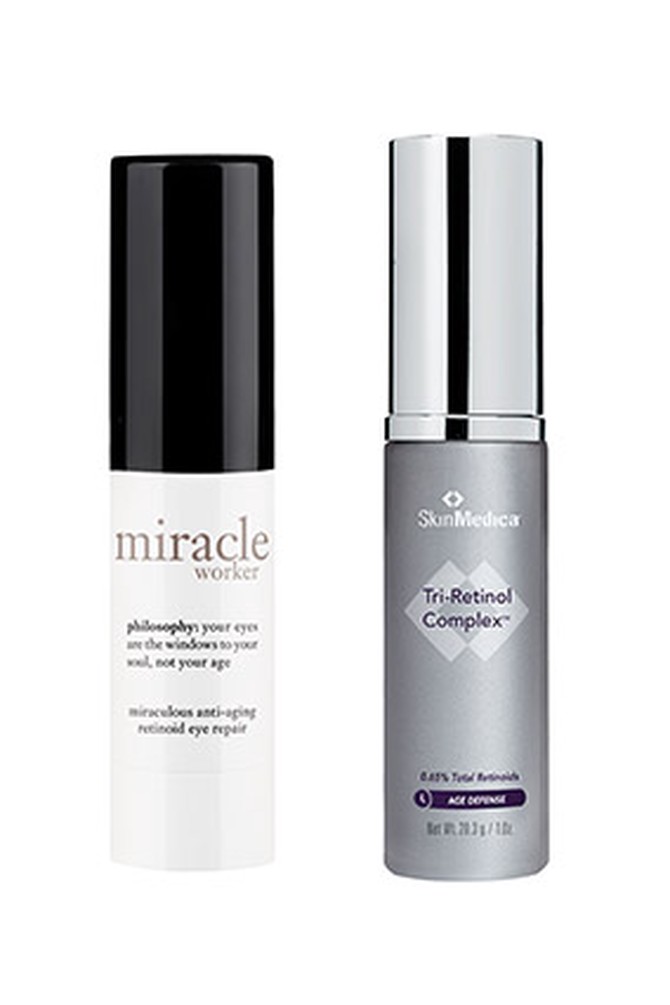
Photo: Craig Cutler
Retinoids
Star power: We found several thousand published studies on
the skin-saving effects of these vitamin A derivatives. The overwhelming consensus: Retinoids increase collagen production (plumping your skin), speed up cell turnover (smoothing your complexion) and unclog pores (reducing breakouts).
What to look for on the label: If it's a prescription: tretinoin (brand names Atralin, Avita, Retin-A, Retin-A Micro, Renova), tazarotene (Avage, Tazorac) and adapalene (Differin). If it's over-the-counter: retinol, which minimizes lines and discoloration more slowly than its prescription counterparts (12 weeks, not six, before you see improvements).
For best results: Allow your skin to become accustomed to a retinoid, which can cause redness, flaking, and peeling. Start by applying it every third night (because it's sensitive to sunlight, don't apply in the morning). After two weeks, apply every other night. If you're not dry or flaky after another two weeks, use it every night. Wait 15 minutes after washing your face before applying (if skin is damp, the retinoid could be absorbed too quickly and cause irritation). Never use more than a pea-size dab for your whole face; if your skin is dry, you can apply a moisturizer on top.
You should know: Don't layer a retinoid with benzoyl peroxide or alpha hydroxy acids because they will deactivate it.
We recommend:
Philosophy Miracle Worker Miraculous Anti-Aging Retinoid Eye Repair ($65; philosophy.com)
SkinMedica Tri-Retinol Complex ($55; skinmedica.com)
What to look for on the label: If it's a prescription: tretinoin (brand names Atralin, Avita, Retin-A, Retin-A Micro, Renova), tazarotene (Avage, Tazorac) and adapalene (Differin). If it's over-the-counter: retinol, which minimizes lines and discoloration more slowly than its prescription counterparts (12 weeks, not six, before you see improvements).
For best results: Allow your skin to become accustomed to a retinoid, which can cause redness, flaking, and peeling. Start by applying it every third night (because it's sensitive to sunlight, don't apply in the morning). After two weeks, apply every other night. If you're not dry or flaky after another two weeks, use it every night. Wait 15 minutes after washing your face before applying (if skin is damp, the retinoid could be absorbed too quickly and cause irritation). Never use more than a pea-size dab for your whole face; if your skin is dry, you can apply a moisturizer on top.
You should know: Don't layer a retinoid with benzoyl peroxide or alpha hydroxy acids because they will deactivate it.
We recommend:
Philosophy Miracle Worker Miraculous Anti-Aging Retinoid Eye Repair ($65; philosophy.com)
SkinMedica Tri-Retinol Complex ($55; skinmedica.com)
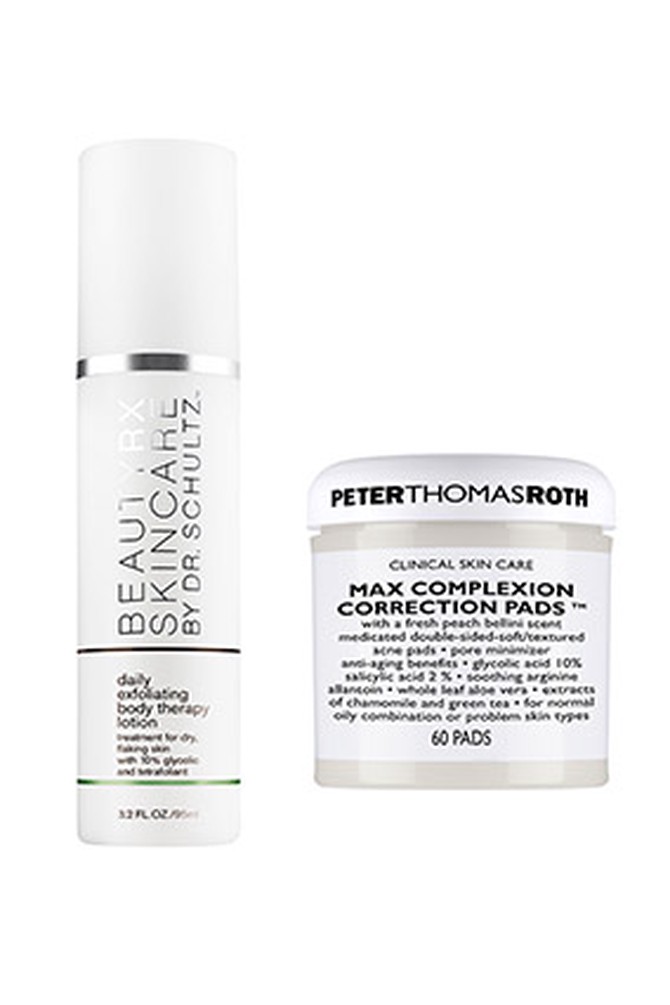
Photo: Craig Cutler
Alpha Hydroxy Acids (AHAs)
Star power: These acids, often derived from fruit or milk sugars, dissolve the "glue" between the complexion-dulling dead skin cells that accumulate with age, allowing them to be sloughed off, revealing fresh skin. Discoloration is minimized, skin feels smoother, and pores can look smaller. Overall, skin is more luminous.
What to look for on the label: Glycolic, malic, citric and lactic acids. Glycolic is the most commonly used because it yields good results with little irritation.
For best results: Add an AHA lotion or cream to your daily skincare regimen, or do an at-home AHA peel once a week (or more, if your skin isn't too sensitive). Many dermatologists recommend using an AHA lotion in the morning so your nighttime treatment (whether a retinoid, basic moisturizer, or both) can penetrate more effectively. Both retinoids and AHAs exfoliate the skin, so ease into a regimen that includes the two to avoid redness and peeling. AHAs are great to use on your neck (where the skin is generally too thin to tolerate a retinoid), and can smooth irritation like keratosis pilaris (those little bumps you might have on the backs of your arms) as well as ashy elbows and knees.
You should know: Cleansers containing AHAs aren't in contact with the skin long enough to have any effect. To get results, invest in a cream instead.
We recommend:
Peter Thomas Roth Max Complexion Correction Pads ($36; peterthomasroth.com)
Beauty Rx Skincare by Dr. Schultz Daily Exfoliating Body Therapy Lotion ($50; beautyrx.com)
What to look for on the label: Glycolic, malic, citric and lactic acids. Glycolic is the most commonly used because it yields good results with little irritation.
For best results: Add an AHA lotion or cream to your daily skincare regimen, or do an at-home AHA peel once a week (or more, if your skin isn't too sensitive). Many dermatologists recommend using an AHA lotion in the morning so your nighttime treatment (whether a retinoid, basic moisturizer, or both) can penetrate more effectively. Both retinoids and AHAs exfoliate the skin, so ease into a regimen that includes the two to avoid redness and peeling. AHAs are great to use on your neck (where the skin is generally too thin to tolerate a retinoid), and can smooth irritation like keratosis pilaris (those little bumps you might have on the backs of your arms) as well as ashy elbows and knees.
You should know: Cleansers containing AHAs aren't in contact with the skin long enough to have any effect. To get results, invest in a cream instead.
We recommend:
Peter Thomas Roth Max Complexion Correction Pads ($36; peterthomasroth.com)
Beauty Rx Skincare by Dr. Schultz Daily Exfoliating Body Therapy Lotion ($50; beautyrx.com)
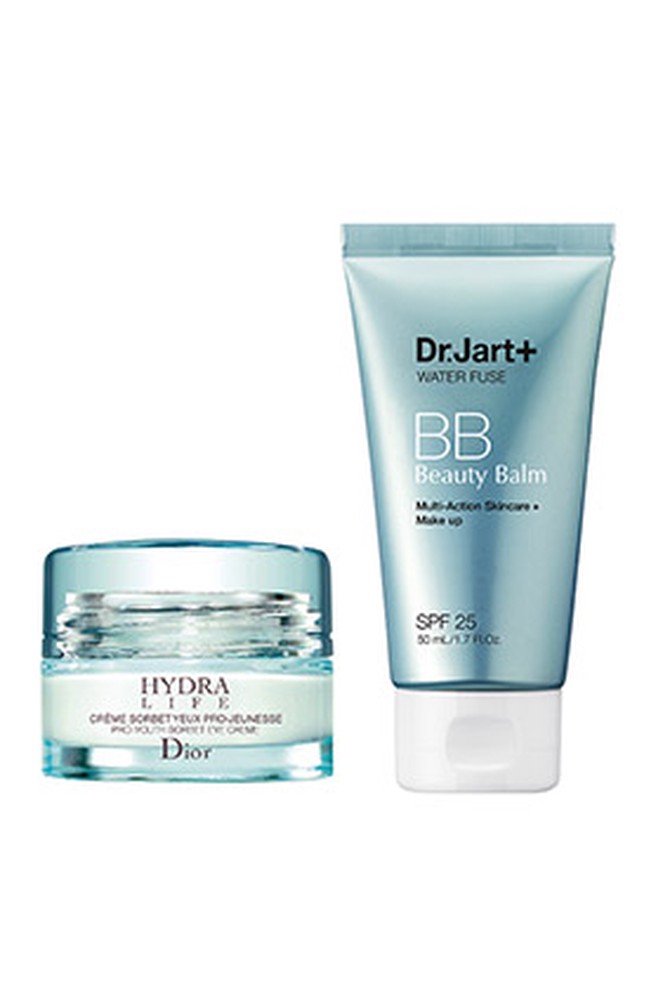
Photo: Craig Cutler
Hyaluronic Acid
Star power: A synthetic version of the skin-plumping, joint-lubricating substance produced naturally in our bodies—actually
a sugar—the hyaluronic
acid in skincare products is a terrifically effective humectant.
"It draws a tremendous amount
of water to the skin—about 1,000 times its weight," says cosmetic chemist Randy Schueller, editor
in chief of thebeautybrains.com. Hyaluronic acid not only makes parched skin feel better but also temporarily plumps it, and is
light enough to blend seamlessly with makeup.
What to look for on the label: Hyaluronic acid, hyaluronan and sodium hyaluronate.
For best results: Use liberally wherever your skin is dry and needs hydrating. Hyaluronic acid isn't irritating and won't interact negatively with, or compromise the effectiveness of, other skincare ingredients you might be using.
You should know: To smooth very dry skin, you'll need more than hyaluronic acid alone. Start by applying a hyaluronic acid serum or light lotion on clean skin, then top it with a rich moisturizer in a lotion or a cream that contains ceramides (moisture-retaining lipids).
We recommend:
Dior Hydra Life Pro-Youth Sorbet Eye Crème ($49; dior.com)
Dr. Jart+ Water Fuse Beauty Balm SPF 25 PA++ ($34; sephora.com)
What to look for on the label: Hyaluronic acid, hyaluronan and sodium hyaluronate.
For best results: Use liberally wherever your skin is dry and needs hydrating. Hyaluronic acid isn't irritating and won't interact negatively with, or compromise the effectiveness of, other skincare ingredients you might be using.
You should know: To smooth very dry skin, you'll need more than hyaluronic acid alone. Start by applying a hyaluronic acid serum or light lotion on clean skin, then top it with a rich moisturizer in a lotion or a cream that contains ceramides (moisture-retaining lipids).
We recommend:
Dior Hydra Life Pro-Youth Sorbet Eye Crème ($49; dior.com)
Dr. Jart+ Water Fuse Beauty Balm SPF 25 PA++ ($34; sephora.com)
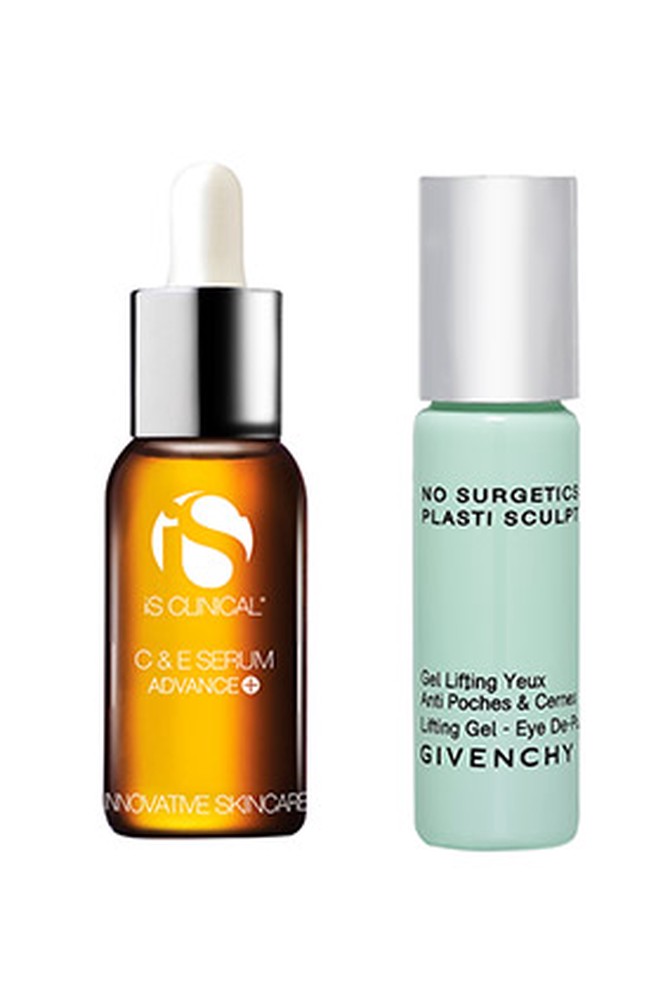
Photo: Craig Cutler
Antioxidants
Star power: Antioxidants disable free radicals, the molecules generated by sun, pollution and other sources, which damage the DNA of healthy skin cells, leading to wrinkles, discoloration and possibly cancer.
What to look for on the label: Vitamin C, idebenone, green tea, vitamin E, ferulic acid, phloretin and coenzyme Q10. Vitamin C is a favorite among doctors because it has been shown to not only fight free radicals but also encourage collagen production. Choose a vitamin C product that contains L-ascorbic acid, one of the more stable forms. It needs to be at a relatively low pH; though you won't see pH on the label, you'll know the level is about right if your skin tingles for a minute after you apply the product.
For best results: "A mix of antioxidants, which all tackle free radicals a bit differently, creates the best offense," says dermatologist Leslie Baumann, MD, director of the Baumann Cosmetic & Research Institute in Miami. An example of an effective regimen: Layer a serum with vitamins C and E under your sunscreen in the morning and a lotion with green tea over your retinoid in the evening.
You should know: Antioxidants (vitamin C in particular) are notoriously susceptible to air and light. To be effective, they must be packaged in an airtight, opaque pump or tube.
We recommend:
iS Clinical C & E Serum Advance+ ($128; dermstore.com)
Givenchy No Surgetics Plasti Sculpt Eye Lifting Gel ($81; sephora.com)
What to look for on the label: Vitamin C, idebenone, green tea, vitamin E, ferulic acid, phloretin and coenzyme Q10. Vitamin C is a favorite among doctors because it has been shown to not only fight free radicals but also encourage collagen production. Choose a vitamin C product that contains L-ascorbic acid, one of the more stable forms. It needs to be at a relatively low pH; though you won't see pH on the label, you'll know the level is about right if your skin tingles for a minute after you apply the product.
For best results: "A mix of antioxidants, which all tackle free radicals a bit differently, creates the best offense," says dermatologist Leslie Baumann, MD, director of the Baumann Cosmetic & Research Institute in Miami. An example of an effective regimen: Layer a serum with vitamins C and E under your sunscreen in the morning and a lotion with green tea over your retinoid in the evening.
You should know: Antioxidants (vitamin C in particular) are notoriously susceptible to air and light. To be effective, they must be packaged in an airtight, opaque pump or tube.
We recommend:
iS Clinical C & E Serum Advance+ ($128; dermstore.com)
Givenchy No Surgetics Plasti Sculpt Eye Lifting Gel ($81; sephora.com)
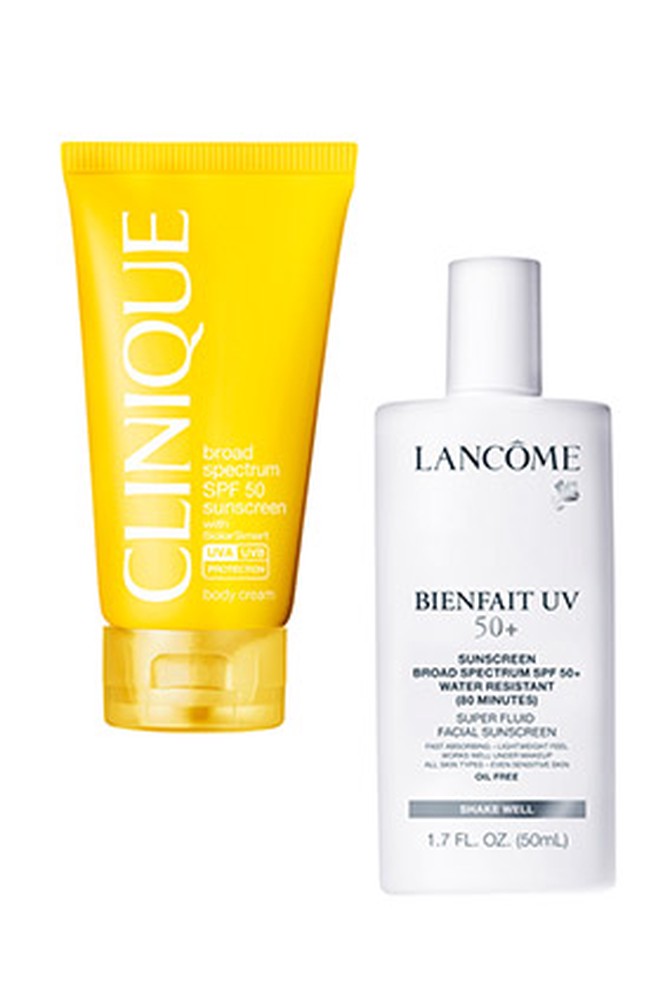
Photo: Craig Cutler
Sunscreen
Star power: More than 90 percent of the wrinkles, dark spots and crepiness attributed to aging is caused by sun exposure. The UV filters in sunscreen absorb or scatter UV light before it can damage your skin; in effect, they stop aging.
What to look for on the label: Broad-spectrum (meaning the product blocks both UVA and UVB rays). For days spent outdoors, also look for water-resistant (either for 40 or 80 minutes). You may prefer the silky texture of a chemical sunscreen (like avobenzone, oxybenzone and brand names Helioplex and Mexoryl), but a physical sunscreen (zinc oxide and titanium dioxide) is less potentially irritating and now a good choice for every skin tone because micronized formulas don't look chalky. Physical sunscreens also absorb excess oil—good if you have shiny skin.
For best results: Apply sunscreen with at least an SPF 30 before you leave the house in the morning (if it's a chemical sunscreen, give it 15 minutes to start working); reapply every two to three hours if you are outside all day. Use about a teaspoonful of sunscreen on your face. (This is a lot of sunscreen; use as much as you can tolerate.)
You should know: Did you believe the myth that we get most of our sun exposure in childhood? In fact, less than 25 percent of lifetime sun exposure occurs before the age of 18, and less than 50 percent before you're 40.
We recommend:
Lancôme Bienfait UV SPF 50+ ($38; lancome.com)
Clinique Sun Broad Spectrum SPF 50 Sunscreen Body Cream ($23; clinique.com)
Next: 7 fruits and vegetables that reverse the signs of aging
What to look for on the label: Broad-spectrum (meaning the product blocks both UVA and UVB rays). For days spent outdoors, also look for water-resistant (either for 40 or 80 minutes). You may prefer the silky texture of a chemical sunscreen (like avobenzone, oxybenzone and brand names Helioplex and Mexoryl), but a physical sunscreen (zinc oxide and titanium dioxide) is less potentially irritating and now a good choice for every skin tone because micronized formulas don't look chalky. Physical sunscreens also absorb excess oil—good if you have shiny skin.
For best results: Apply sunscreen with at least an SPF 30 before you leave the house in the morning (if it's a chemical sunscreen, give it 15 minutes to start working); reapply every two to three hours if you are outside all day. Use about a teaspoonful of sunscreen on your face. (This is a lot of sunscreen; use as much as you can tolerate.)
You should know: Did you believe the myth that we get most of our sun exposure in childhood? In fact, less than 25 percent of lifetime sun exposure occurs before the age of 18, and less than 50 percent before you're 40.
We recommend:
Lancôme Bienfait UV SPF 50+ ($38; lancome.com)
Clinique Sun Broad Spectrum SPF 50 Sunscreen Body Cream ($23; clinique.com)
Next: 7 fruits and vegetables that reverse the signs of aging
Published 04/16/2013

